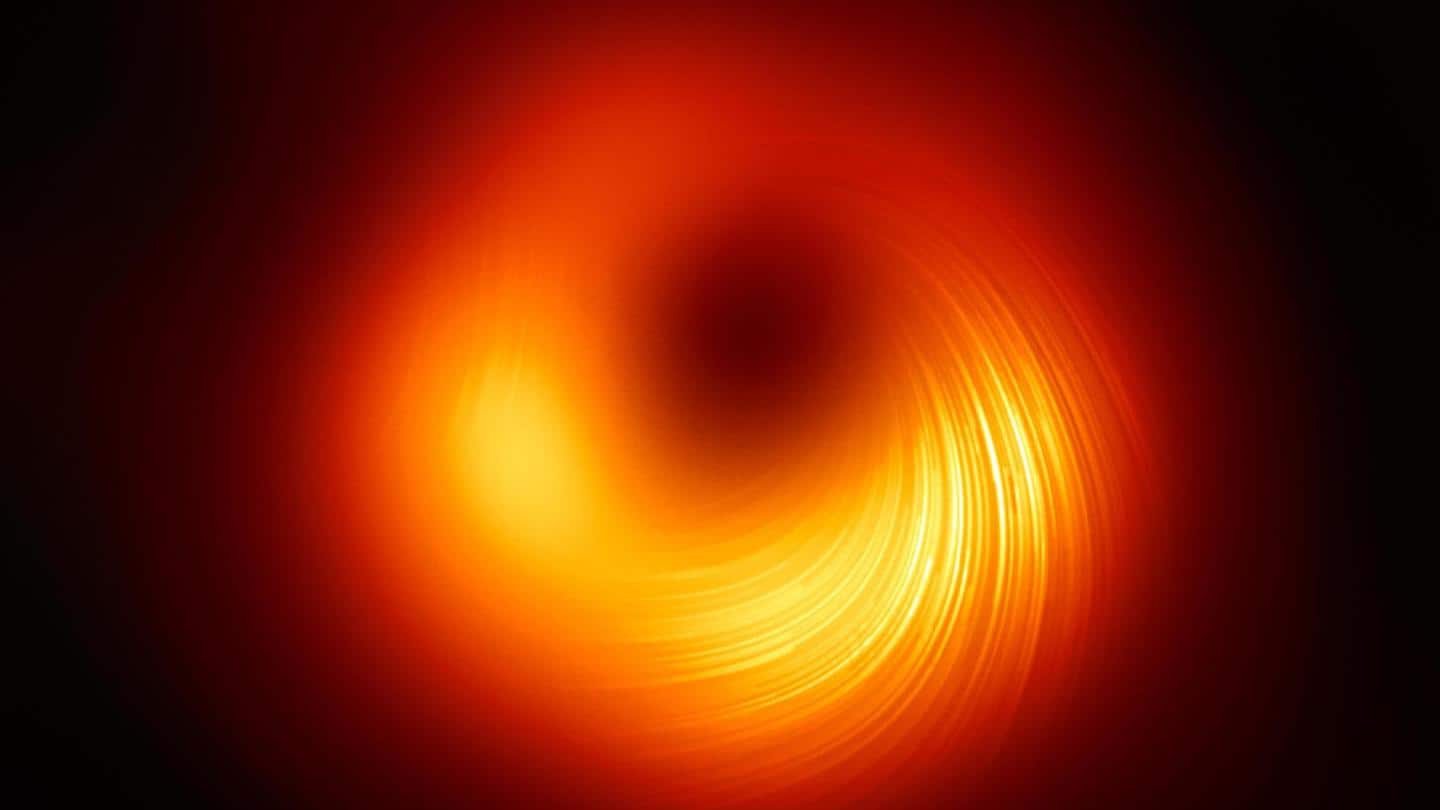
Event Horizon Telescope releases most detailed black hole image yet
What's the story
The Event Horizon Telescope (EHT) collaboration has recently published what is being touted as the most detailed image of a black hole to date.
The picture, published on Wednesday, is a polarized image of a black hole in the Messier 87 (M87) galaxy. Astronomers believe the picture could further humankind's understanding of how magnetic fields emanate out of black holes.
Global collaboration
Black hole is 6.5 billion times our Sun's mass
The EHT is a collaboration between eight radio observatories, 300 astronomers, and 13 institutions around the world. The team's latest findings polarized the radio waves emitted by the M87 galaxy's black hole.
The black hole's mass is 6.5 billion times that of the Sun. The M87 galaxy is a part of the Virgo constellation and is located 55 million light-years away.
Information
What is a black hole and how is one formed?
Black holes are entities in space where gravity is so strong, even light cannot escape. Black holes are formed when stars collapse into themselves. They are a twisting vortex of energy, magnetic charge, and dying stars littered around the cosmos.
Fuzzy ring
The EHT team also produced the first-ever black hole image
The EHT's findings were announced in three papers published in The Astrophysical Journal Letters. Two of these were published by the EHT collaboration and one by Ciriaco Goddi of Radboud University in the Netherlands.
The New York Times reports that two years ago, the EHT team had produced the first-ever image of a black hole (pictured). The image resembled a fuzzy smoke ring.
Fresh insight
New images will help scientists find origin of magnetic fields
NYT reports that the scientists studied the relativistic jets of radio and X-rays. They understood that much of this radiation comes from charged particles spiraling in magnetic fields.
The newly processed image will allow astronomers to trace the origins of the magnetic fields.
Astrophysicist and EHT team member Andrew Chael remarked that the M87 jets could be powered by the black hole's rotational energy.
Do you know?
A quick overview of what make relativistic jets
As black holes feed on the surrounding gas and dust, they spew jets of particles (scientists aren't sure how) along the axis of rotation of the black hole. These jets are believed to be the source of cosmic rays, the universe's fastest traveling particles.
Next move
EHT now working to create first video of black hole
The EHT collaboration's founding director, Dr. Sheperd Doeleman, said that astronomers are now able to estimate the rate at which the black hole is consuming its surroundings.
Dr. Doeleman added that the EHT team is now working to create the first video of a black hole. The move will help astronomers understand how the magnetic fields extract energy from the spinning black hole.